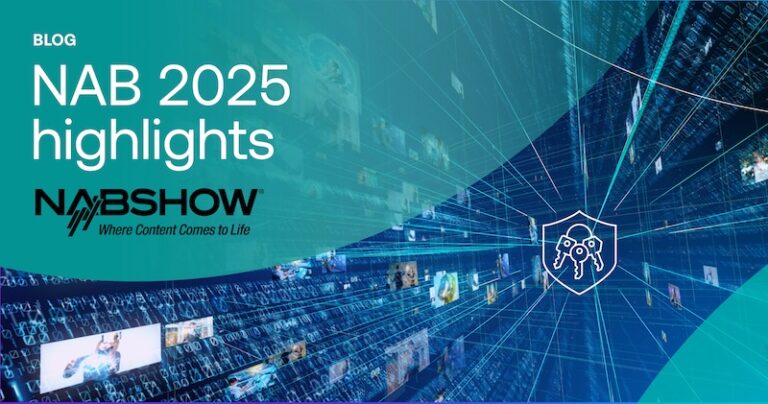As discussed in the previous blog on live performance streaming surge, the unprecedented scale of live streaming of concerts, theater plays, and other high-value events is posing challenges related to content protection that rights owners and producers seldom had to be concerned with before COVID-19 hit.
Producers now realize that there are many advantages to retaining live-streamed event viewing with the return to in-venue attendance, given that streaming has become a significant revenue source beyond live event ticket sales.
Clearly, as venues gradually reopen, there’s every reason to capture revenue from people who otherwise would be unable to attend in person. Unfortunately, large online revenues bring the menace of content piracy, which is impacting revenue-producing streaming services at an alarming rate.

Using pirate sources for streamed content has regrettably become second nature to a large proportion of video consumers globally , especially among younger viewers and, most notably, in the U.S. As reported by Statista, pirate site visits from the U.S., totaling some 28 billion in 2018, substantially outnumber visits from other countries, which among the other top 10 that year ranged from 9 billion from the U.K. to almost 21 billion from Russia.
The need for multi-DRM content protection
A digital rights management (DRM) system provides the level of protection event producers need, but not without some additional complexity. The type of DRM to use depends on which DRM system is supported by each client device. This necessitates the use of multi-DRM solutions to cope with an increasingly fragmented client device environment.
The lion’s share of connected devices natively support one of three DRMs associated with the dominant operating systems: Apple FairPlay Streaming with iOS, macOS and tvOS; Microsoft PlayReady with every Windows device and some Android devices, and Google Widevine with every Android device and some others.
But any distributor who wants to maximize reach must also consider the fact that there’s still a significant number of devices natively equipped to support Adobe Primetime DRM and others that don’t support any of the DRMs that have been certified under current studio licensing policies. And there’s also a vast ecosystem of devices, primarily in Asia but to some extent in Europe as well, that natively support the open-standard Marlin DRM.
Distributors also must contend with the fragmentation within generations of device operating systems (OS), which impacts how they interact with OEMs and DRM suppliers to authenticate the devices for access to premium content. To ensure consumers can access content on whatever device is at hand, distributors must be able to communicate with the core security embedded in the device OS or OEM chipsets.
A cost-effective and globally accessible multi-DRM solution
Fortunately, any distributor of event productions can cost effectively fulfill this multi-DRM mandate through implementation of ExpressPlay DRM, the software-as-a-service (SaaS) component of Intertrust’s ExpressPlay Media Security Suite. This market-leading platform has been deployed in large-scale video streaming operations and proven to enable multi-DRM workflows with great technical agility and cost-effectiveness.
Operating on Amazon Web Services (AWS) facilities worldwide, ExpressPlay DRM makes it possible for content distributors to implement robust rights management on a usage-driven cost basis without adding new infrastructure. This success-oriented fee structure reflects Intertrust’s graduated pricing that reduces per-use rates as total usage increases.
The service orchestrates management of device credentials, content key storage, content encryption, secure playback with multi-DRM license delivery, and real-time generation of audit reports on distributors’ adherence to licensing terms.
Critically, this is the only multi-DRM solution that supports all major DRMs, including Apple FairPlay Streaming, Google Widevine, Microsoft PlayReady, Adobe Primetime and the open-standard Marlin DRM, which is based on specifications co-developed by Intertrust, Panasonic, Philips, Samsung and Sony. Support for Marlin extends the market reach and cost efficiency given that it is a natively embedded and studio-trusted alternative to the earlier mentioned DRMs, and operating in millions of devices across Asia and elsewhere.
ExpressPlay DRM also supports hardware-level integration that allows hardware roots of trust (HWRoT) to associate unmanaged consumer devices with a distributor’s content at the chip level. This is accomplished through Widevine Level 1 and PlayReady SL3000 as well as Marlin.
End users’ access can be enabled in either of two scenarios: one where OEMs have exposed HWRoTs for direct access by third parties, or one where supplying authentication keys requires access to HWRoTs exposed by the security provisioning processes of OS-specific app stores.
Disrupting the illicit enjoyment of pirated content
While comprehensive multi-DRM protection is essential to minimizing illegal use of valuable event content, producers will want to take additional steps to combat the rampant modes of piracy that may circumvent DRM protection by retransmitting content once it is decrypted. This is done through multiple techniques such as recording and retransmitting content directly from high-quality Ultra HD/4K TV screens, and using High Bandwidth Digital Content Protection (HDCP) “strippers” to steal in-the-clear video from HDMI links to TV sets. Such tactics make it possible to feed pirated content, including live streamed video, to origin servers for rapid distribution worldwide.
To confront these threats, producers need to know to what extent, if any, their streaming services are affected by piracy. This requires some way to ascertain when and to what degree theft is occurring by quickly identifying any streams distributed from unlicensed sources.
If web monitoring reveals the level of piracy is exceeding a provider’s pain threshold, the next step is to identify the thieves, disrupt their illicit distribution, and take appropriate legal action to shut them down. This is accomplished through insertion of forensic watermarks (invisible pixel modifications to carry user-specific data), to tie each stream to a specific recipient, which must be done using methods that can rapidly disrupt piracy viewer enjoyment.
Here, again, the solutions lie with cloud-based technology embodied in the ExpressPlay Media Security Suite. In this case, the platform provides the most effective tools available, both for monitoring theft and for employing watermarking, while exploiting the same SaaS cost efficiencies that come with use of ExpressPlay DRM.
To learn more about how to employ the most effective arsenal available for ensuring the highest levels of protection for streaming live concerts, plays and other performances, please contact us or request a free live streaming consultation.








